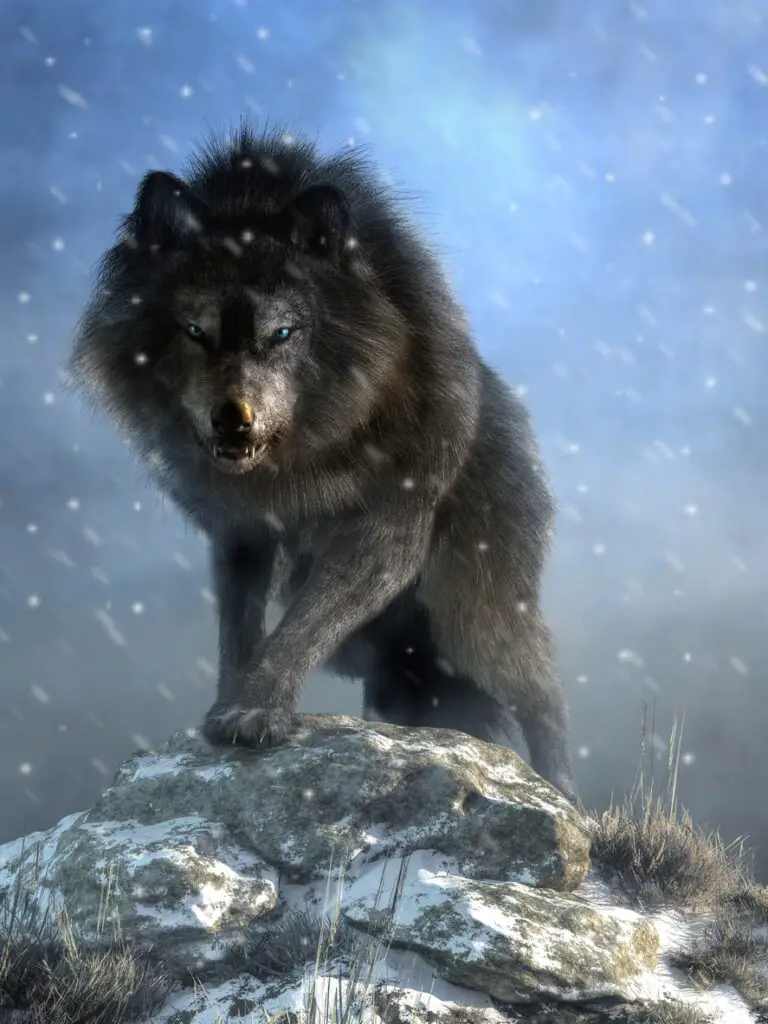The dire wolf has recently risen to popularity due to a few successful and, admittedly, awful movies and television shows. But what really was the now-extinct dire wolf? Honestly, they were not as big as horses. Indeed, they probably could not have ripped a man’s arm out of its socket.
The dire wolf survived for millennia but died out about 13,000 years ago. Today, their distant cousins, the gray wolf and its subspecies may look physically similar, but they are no longer genetically related.
They may not have even been as big as some of today’s Russian gray wolves. The dire wolf weighed about 150 pounds, but the Russian gray wolf averages 150-175 pounds. And unlike the long-gone dire wolf, the Russian wolf is still found in the northern hemisphere of Asia and throughout Europe.
Related: Mexican wolf facts.
Related: Why we don’t want the Gray wolf back in New York.

What was the dire wolf?
The Dire wolf (Aenocyon dirus) is an extinct canine that lived in the Americas and eastern Asia for 250,000 years and died out at the end of the Pleistocene era( about 13,000 years ago). It was nearly as tall as a gray wolf (40 inches high at the shoulder) and had a similar body length (70) inches.
The dire wolf preyed upon now-extinct megafaunas such as Ice Age horses, peccaries, llamas, sloths, tapirs, and glyptodonts. Unfortunately, most of these Ice Age species also became extinct at the end of the Pleistocene era.
The dire wolf and the gray wolf probably co-existed for thousands of years. In an example of convergent evolution (Like dolphins and sharks), Dire wolves and gray wolves shared interchangeable ways of living and similarly adjusted to their setting.
The dire wolf and the gray wolf were once equally tall. However, the dire wolf was about 25% heavier than the gray wolf (13,000 years ago, anyway), had a more substantial bite (it hunted larger prey), and could crack bones with its powerful jaws.
Related: Arabian wolf facts.
Related: How to identify the red wolf.
Dire wolf diet.
The dire wolf used its powerful jaws, incredible muscularity, and pack-hunting tactics to take down primarily megafauna. The gray wolf, however, hunted much smaller prey. When food was scarce, both direwolves and gray wolves scavenged kills from each other and other predators, such as the Smilodon (saber-toothed tiger).
Scientists believe that when the megafauna started dying at the end of the Pleistocene era, the dire wolf could not compete against the gray wolf when it came to catching faster, smaller prey.
Other scientists believe incoming dog-like species and gray wolves may have spread diseases that decimated the dire wolf population.
Related: How to identify the Timber wolf.
Related: All about the Great Plains wolf.
Dire wolf range and habitat.
The Dire wolf roamed across a broad range of habitats, including the plains, grasslands, and some forested mountain areas of North America (as far north as Alaska).
The La Brea tarpits have provided a wealth of dire wolf fossils.
The dire wolf inhabited South America, including Bolivia, Peru, and Venezuela. Indeed, a dire wolf jawbone suggests they also resided in China.
The dire wolf’s incredible range indicates it adjusted to various habitats, from tropical wetlands to open coastal woodlands and boreal grasslands.
Related: Arctic wolf facts.
Related: The Mackenzie Valley wolf. The largest wolf alive today.
The La Brea tarpits and direwolves.
The dire wolf and the La Brea tarpits.
According to 101-The-Dire-Wolf
“Tar pits around the world are unusual in accumulating more predators than prey. The reason for this is unknown, but one theory is that a large prey animal would die or become stuck in a tar pit, attracting predators across long distances.
This predator trap would catch predators along with their prey. Another theory is that dire wolves and their prey were trapped during a hunt. Since modern wolves hunt in packs, each prey animal could take several wolves with it. The same may be true of saber-toothed cats known from the area. The most common animals from this area included dire wolves, saber-toothed cats, coyotes, ancient bison, and Jefferson’s ground sloth.“
Related: How to tell a wolf from a coyote.

